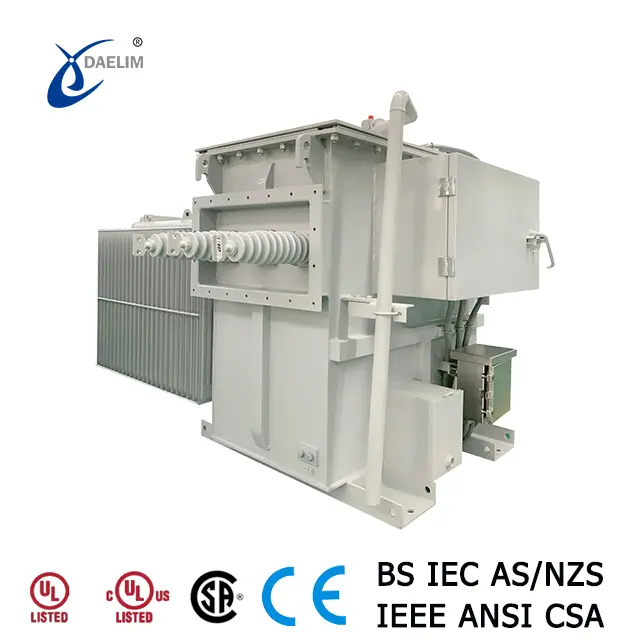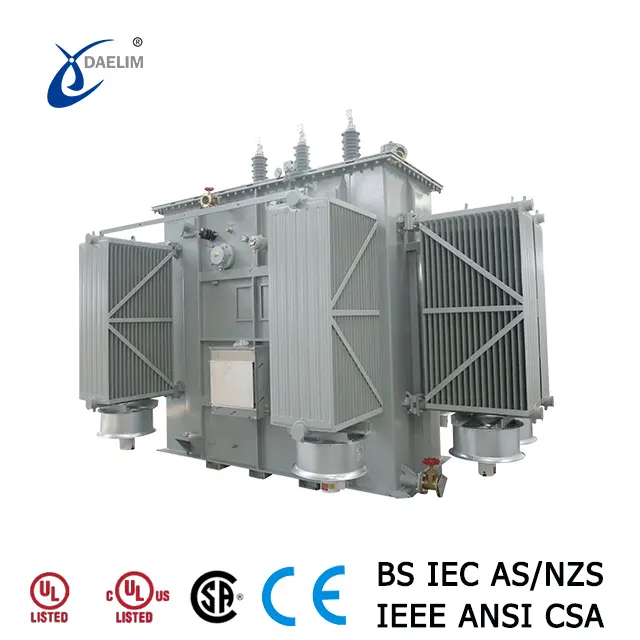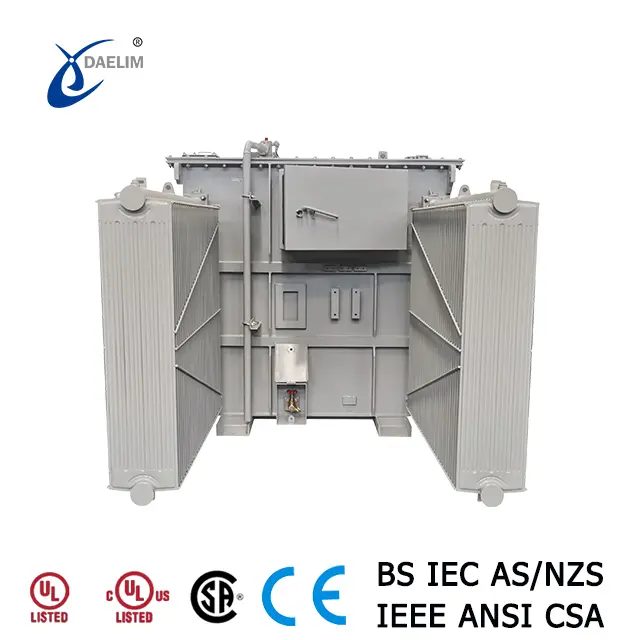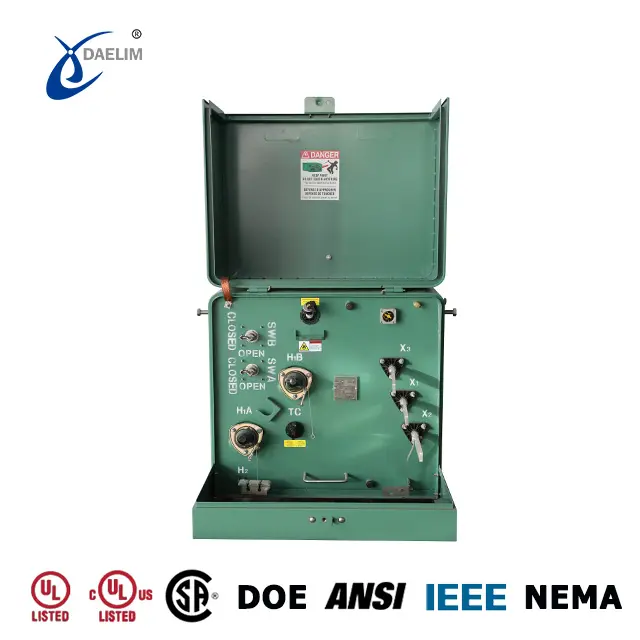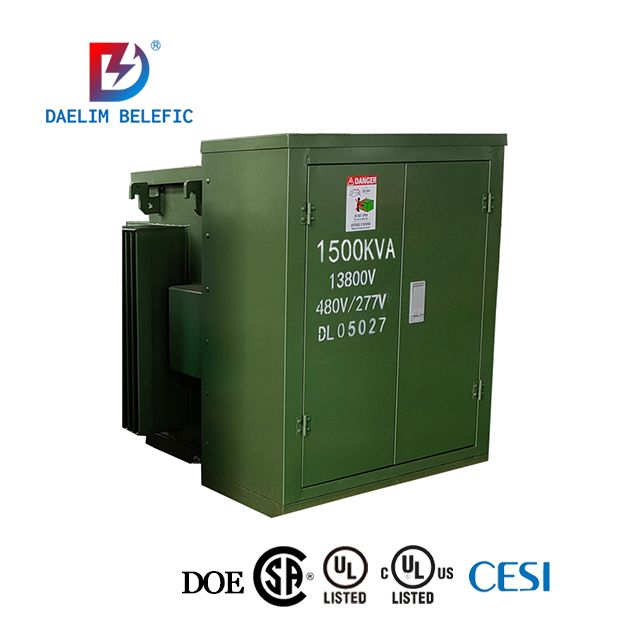Classification of Gas Generation During Transformer Operation
Gas generation in transformers can stem from various sources and fault types, each indicating specific operational or insulation issues. Understanding these classifications is crucial for effective maintenance and fault diagnosis in transformer systems.
Natural Aging Gas Generation
Natural aging refers to slow chemical changes occurring in transformer oil-paper insulation due to heat and electrical stress. This process produces small amounts of characteristic gases like CO and CO2, typically not indicating faults but rather normal aging.
Gas Generation from External Sources
1) On-load Tap Changer (OLTC) Tank Leakage:
- Cause: Arcing during OLTC operation causes oil decomposition in the tank.
- Gas Type: Characteristic gases from OLTC tank leakage detected in main tank oil.
2) Bushing Fault:
- Causes: Poor contact, insulation dampness, or overheated connectors.
- Gas Type: Large amounts of characteristic gases due to bushing insulation breakdown.
3) Submersible Pump Fault:
- Cause: Motor insulation breakdown or mechanical friction.
- Gas Type: Overheated gases and discharge gases in main oil tank.
4) Oil Repair Welding:
- Cause: Improper welding during oil tank repairs leading to oil decomposition.
- Gas Type: Characteristic gases in oil termed as oil-repair welding gas.
5) Fault Residual Gas:
- Cause: Incomplete removal of fault gases after maintenance.
- Gas Type: Persistent presence of characteristic gases post-fault.
6) Gas Mixed in Oil:
- Cause: Incorrect oil injection resulting in the presence of characteristic gases like acetylene.
- Gas Type: Fault-indicative gases due to improper oil handling.
Partial Discharge Fault Gas Generation
Partial discharge in transformers includes types like suspended conductor discharge, tip discharge, interlayer discharge, and drive current discharge. These discharges generate characteristic gases specific to each type.
Suspended Conductor Discharge Fault Gas: This occurs due to situations like loose connections or foreign objects on windings, resulting in local insulation breakdown and subsequent characteristic gas production.
Tip Discharge Fault Gas: Tip discharge involves potential tip electrodes, generating characteristic gases, primarily acetylene, due to local discharges within the transformer.
Interlayer Discharge Fault Gas: High electric field strength in interlayers can cause moisture accumulation and eventual discharge, leading to characteristic gas production before complete breakdown.
Drive Current Discharge Fault Gas: Discharge caused by conductor current into the medium forms arcs (e.g., tap changer arcing), triggering protective measures and termed as drive current discharge with characteristic gas production.
Overheat Fault Gas
Overheating in transformers due to working current, eddy current, or circulating current faults generates characteristic gases, categorized into specific fault types:
Working Current Circuit Overheating Fault Gas: Increased contact resistance in electrical joints or tap changer contacts results in overheating and specific characteristic gas production.
Circulating Current Circuit Overheating Fault Gas: Faults such as multiple-point grounding of the core or short-circuit points in core laminations cause circulating currents and overheating, generating characteristic gases.
Eddy Current Circuit Overheating Fault Gas: Rare but possible, this fault type involves internal or external oil tank faults due to eddy currents, detectable by infrared thermometers or temperature anomalies.
Gas Production Accidents
-
Internal short circuit accident of winding, including insulation failures between turns, sections, or layers.
-
Through-discharge accident of winding to ground or other windings, including dendritic discharge along the screen, and discharge of low-voltage winding to the iron core.
-
Lead wire accidents, including short circuits between phases of the lead wire on the low-voltage side, flashover along the surface of the lower porcelain sleeve on the high-voltage side, etc.
-
Arcing of tap changer, including the explosion of the oil chamber due to failure of the switching switch to extinguish the arc, arcing of moving and static contacts due to poor contact, phase-to-phase short circuit of the three-phase tap changer, etc.
-
Casing explosion accident, including ignition of the casing.
After these accidents occur, a large amount of characteristic gas will suddenly be generated in the oil tank, collectively referred to as accident gas.
DGA (Dissolved Gas Analysis) and Fault Detection Gas analysis methods such as the IEC three-ratio method or qualitative analysis help identify fault types based on gas components and their concentrations, aiding in diagnostics and maintenance of electrical equipment.
The reference table for judging the limit values of hydrogen and hydrocarbon gas content is as follows:
| Composition | Content: μL/L(ppm) | ||
| Normal | Warning | Fault | |
| H2 | <100 | 100~200 | >200 |
| CH4 | <45 | 45~80 | >80 |
| C2H6 | <35 | 35~50 | >50 |
| C2H4 | <55 | 55~100 | >100 |
| C2H2 | <5 | 5~10 | >10 |
| C1+C2 | <100 | 100~200 | >200 |
Characteristic gas method for judging the nature of the fault
| No. | Fault | Gas characteristics |
| 1 | General overheating fault | Total hydrocarbons are high, C2H2<5ppm |
| 2 | Severe overheating fault | Total hydrocarbons are high, C2H2>5ppm, but C2H2 does not constitute the main component of total hydrocarbons, and the H2 content is high |
| 3 | Partial discharge | Total hydrocarbons are not high, CH4 is the main component of total hydrocarbons, H2>100ppm |
| 4 | Spark discharge | Total hydrocarbons are not high, C2H2>10ppm, H2 is relatively high |
| 5 | Arc discharge | Total hydrocarbons are high, C2H2 is high and constitutes the main component of total hydrocarbons, and the H2 content is high |
| 6 | Bare metal overheating | Total hydrocarbons are high, CO and C2H2 are both within the normal range |
| 7 | Metal overheating and involving solid insulation | Total hydrocarbons, open transformer, CO>300μL/L, acetylene is normal |
| 8 | Solid insulation overheating | Total hydrocarbons are around 100μL/L, open, CO>300μL/L |
| 9 | Metal overheating and discharge | Total hydrocarbons are high, C2H2>5, H2 content is relatively high |
Gas characteristics vary with the fault type, fault energy, and the insulation materials involved, that is, the unsaturation of hydrocarbon gas produced at the fault point is closely related to the energy density of the fault source.
The relationship between the main components in the gas and the abnormal conditions is shown in the following table:
| Transformer Fault Type | Generated Gas Composition |
| Transformer oil overheating | H2、CH4、C2H4、C2H6 |
| Oil and insulation paper overheating | CO、CO2、H2、CH4、C2H4、C2H6 |
| Arc in oil | H2、CH4、 C2H4、 C2H2、 CH6 |
| Partial discharge in oil | H2、CH4、 C2H4、 C2H6 |
| Arc in insulation paper in oil | CO、CO2、H2、CH4、C2H4、C2H6、 C2H2 |
| Spark discharge in oil | H2、 C2H2 |
| Water intrusion or moisture in the transformer | H2 |
Conclusion
Classifying gas generation in transformers provides a structured approach to diagnosing faults based on gas analysis. Understanding the types of gases and their origins helps pinpoint specific transformer issues, guide maintenance efforts, and ensure operational reliability. By utilizing diagnostic tools like Dissolved Gas Analysis (DGA) and understanding the nature of gas emissions, utilities can effectively manage transformer health and mitigate potential failures, enhancing overall system performance and longevity.
Related Products
Related Article
Smart Substation
In the realm of modern energy infrastructure, the evolution from conventional substations to smart substations marks a significant leap forward. Smart substations integrate cutting-edge technology with a focus on sustainability and efficiency, reshaping the landscape of power distribution.
Transformer Insulation Failure
Transformer insulation is critical for maintaining electrical integrity and reliability. Two primary types of insulation used in oil-immersed transformers are solid paper insulation and transformer oil insulation. Understanding their characteristics, failure modes, and diagnostic methods is essential for ensuring transformer longevity and operational safety.
Diagnostic Methods for Power Transformer Insulation
Power transformers rely on robust insulation systems to ensure operational reliability and longevity. Over time, however, various factors can degrade these insulation systems, necessitating effective diagnostic methods to assess their condition. Here, we explore the key techniques employed for diagnosing both oil and solid insulation in transformers.

